Introduction: Porsche – A Legacy of Performance and Innovation
Porsche, the German automaker renowned for its high-performance sports cars and luxury vehicles, has been at the forefront of automotive innovation for decades. With a history spanning over 70 years, Porsche has become a symbol of precision engineering, exceptional driving dynamics, and a commitment to pushing the boundaries of technology. From the iconic Porsche 911 to cutting-edge electric models like the Taycan, Porsche has consistently delivered vehicles that combine luxury with performance, and the brand continues to lead the charge in the evolving automotive world.
In this article, we will explore Porsche’s latest automotive news, including new models, technological breakthroughs, sustainability initiatives, and its growing influence on the automotive industry. We will also examine the company’s efforts in electrification, autonomous driving, and how it maintains its legacy of performance while adapting to the challenges of the modern automotive landscape.
I. The Evolution of Porsche: From the 356 to the Taycan
A. The Birth of Porsche: The 356 and the Porsche Philosophy
Porsche’s history dates back to 1931 when Ferdinand Porsche founded the company as a consulting firm for automotive development. However, it wasn’t until the launch of the Porsche 356 in 1948 that the brand began to take shape as an iconic sports car manufacturer. Designed by Ferdinand “Butzi” Porsche, the 356 was a breakthrough in design, performance, and engineering, offering exceptional driving dynamics in a lightweight, agile package.
- The 356 quickly became a symbol of Porsche’s commitment to precision engineering and became a cornerstone of the brand’s philosophy of performance, reliability, and agility.
- Over time, the 356 evolved into the Porsche 911, a model that would go on to define the brand’s identity and set the standard for all sports cars.
B. The Porsche 911: The Heart of Porsche’s Performance Legacy
Introduced in 1964, the Porsche 911 became one of the most iconic cars in automotive history. With its distinctive design, rear-engine layout, and superior driving dynamics, the 911 helped solidify Porsche’s position as one of the most prestigious manufacturers in the world.
- Over the years, the 911 has undergone numerous updates, incorporating advanced technologies, better aerodynamics, and improved performance, while maintaining the core elements that made it a success.
- Today, the Porsche 911 is available in various configurations, including coupe, convertible, and the more extreme GT3, Turbo, and Turbo S versions, which continue to set benchmarks for performance in the sports car world.
II. Porsche’s Electric Revolution: The Taycan and Beyond
A. The Launch of the Porsche Taycan: A New Era for Electric Performance
In 2019, Porsche introduced the Taycan, its first fully electric sports sedan, marking a monumental step in the brand’s electrification strategy. The Taycan was designed to combine the performance and driving dynamics Porsche is known for with the benefits of electric propulsion.
- The Taycan features Porsche’s Performance Battery Plus, offering over 200 miles of range on a single charge, as well as ultra-fast charging capabilities that allow it to regain 80% of its charge in just over 20 minutes.
- The Taycan is powered by dual motors and offers exceptional acceleration, with the Taycan Turbo S accelerating from 0 to 60 mph in just 2.6 seconds, making it one of the fastest electric vehicles in the world.
B. Taycan Variants and Expansion of Porsche’s Electric Lineup
Since its debut, Porsche has expanded the Taycan family to include several variants catering to different market needs and performance preferences:
- Taycan Cross Turismo: An off-road inspired electric wagon that offers more versatility and cargo space, while maintaining the Taycan’s high-performance characteristics.
- Taycan GTS: A sportier version that combines luxury with high-end performance features, including adaptive air suspension and a more dynamic driving experience.
- Taycan 4S: A more accessible version of the Taycan, offering less extreme performance but still impressive capabilities with all-wheel drive and a lower entry price.
Porsche’s decision to embrace electric vehicles while staying true to its performance roots has made the Taycan a significant milestone for the brand. It has successfully merged Porsche’s driving philosophy with the demands of sustainability and environmental responsibility.
C. Porsche’s Future Electric Plans: Mission E and Beyond
Porsche’s commitment to electric vehicles is set to grow, with the company planning to expand its electric lineup further in the coming years. The Mission E Cross Turismo and future models based on the PPE (Premium Platform Electric) architecture promise to deliver Porsche’s hallmark performance in fully electric packages.
- Porsche has already announced plans to electrify 50% of its fleet by 2025 and is investing heavily in sustainable technologies, including solid-state batteries and expanding its network of fast-charging stations worldwide.
III. Porsche’s Commitment to Sustainability: A Greener Future for the Automotive Industry
A. Sustainable Manufacturing: Reducing Porsche’s Environmental Impact
Porsche is actively working to reduce its environmental footprint across all aspects of its operations, from production to logistics and beyond. At its Zuffenhausen production plant, the company is focusing on implementing eco-friendly manufacturing techniques, including:
- 100% Carbon Neutral Production: Porsche’s factory in Zuffenhausen is now fully carbon-neutral, relying on renewable energy sources and efficient manufacturing processes.
- Recycling Initiatives: Porsche has developed a comprehensive recycling program to reduce waste during manufacturing and increase the reuse of raw materials.
- Sustainable Materials: The company has been integrating more sustainable materials into its vehicle construction, including recycled aluminum and bio-based plastics.
B. Carbon Footprint Reduction and Renewable Energy
In addition to sustainable manufacturing, Porsche is taking steps to reduce its carbon footprint across its vehicle lifecycle. The brand has committed to reducing its CO2 emissions per vehicle by 20% by 2025 and aims for carbon neutrality by 2030.
- Porsche is investing in renewable energy projects, including solar farms and wind energy, to ensure that its energy usage remains sustainable.
- The company is also developing systems for battery recycling to ensure that its electric vehicles remain environmentally friendly even after their use phase.

IV. Porsche’s Technological Innovations: The Future of Driving
A. Autonomous Driving and Driver Assistance Systems
Porsche is exploring the potential of autonomous driving technology to enhance the driving experience while also improving safety. While fully autonomous vehicles are not yet a mainstream reality, Porsche is working on integrating advanced driver assistance systems (ADAS) into its vehicles.
- Porsche InnoDrive is a system that uses GPS data, cameras, and sensors to help the car navigate more efficiently, adjusting speed and steering for optimum comfort and safety.
- Adaptive Cruise Control and Lane Keep Assist are already available on various Porsche models, providing assistance during long drives or highway cruising.
B. Augmented Reality and Digital Cockpits
Porsche is also looking to the future of in-car entertainment and technology. Many of its models, such as the Porsche 911 and Taycan, come equipped with digital cockpits featuring augmented reality displays and touch interfaces.
- The Porsche Communication Management (PCM) system offers an intuitive user interface that integrates navigation, entertainment, and vehicle settings in one display.
- Porsche has also pioneered the integration of augmented reality navigation in certain models, overlaying digital information on the real world to guide the driver more efficiently.
V. Porsche’s Motorsport Legacy and the Intersection of Performance and Innovation
A. Porsche in Motorsports: Racing Pedigree and Innovation
Motorsport has always been central to Porsche’s identity, with the company’s involvement in racing dating back to its earliest days. Porsche’s success in racing has significantly influenced the design and development of its road cars, making them the epitome of performance.
- Porsche has a record-breaking history in Le Mans, with the Porsche 917 and later models like the Porsche 919 Hybrid dominating the competition in endurance racing.
- The Porsche 911 RSR and other racing models are direct descendants of the brand’s motorsport heritage and continue to push the boundaries of automotive technology.
B. Porsche’s Role in Electrified Motorsport: The Formula E Revolution
Porsche has also entered the world of Formula E, the all-electric racing series, in recent years. The Porsche 99X Electric Formula E car marks the brand’s commitment to pushing the limits of electric vehicle performance in the most demanding motorsport environment.
- Porsche’s involvement in Formula E provides valuable insights into the performance capabilities and limitations of electric vehicles, which can then be applied to its production models.
- The lessons learned in Formula E are directly applied to models like the Taycan, helping Porsche refine its electric drivetrain technologies and enhance the driving experience.
VI. Porsche and the Future of Luxury and Performance
A. Embracing the Digital Age: Connectivity and Personalization
Porsche’s vehicles are not just about performance—they are also about luxury, and the brand has continued to refine the customer experience by integrating cutting-edge digital technologies.
- Porsche offers extensive personalization options for its vehicles, allowing customers to tailor everything from exterior paint colors to interior materials and finishes.
- The Porsche Connect system allows for seamless integration with smartphones and digital assistants, offering features like remote vehicle control, diagnostics, and real-time navigation updates.
B. A New Era for Luxury: Balancing Performance with Comfort
Porsche is redefining what it means to be a luxury car manufacturer by blending performance with comfort, craftsmanship, and advanced technology. The Porsche Panamera and Cayenne are prime examples of this balance, offering sports car-like performance in luxury sedans and SUVs.
- The Porsche Cayenne Turbo S E-Hybrid is a prime example of this blend, offering both performance and sustainability through its hybrid powertrain.
- As customers demand more technology, comfort, and convenience, Porsche is adapting its vehicles to meet these new standards, ensuring that it remains competitive in the ever-evolving luxury car market.
Conclusion: Porsche’s Vision for the Future of Automotive Excellence
Porsche’s legacy as a leader in performance, engineering, and innovation is well-established, and its commitment to shaping the future of the automotive industry is clearer than ever. By embracing electrification, advanced technology, and sustainability, Porsche is ensuring that its next generation of vehicles will uphold the brand’s core values of driving performance and luxury while embracing the challenges of the modern world.
From the Taycan and Mission E to its continued success in motorsports and the development of autonomous driving technologies, Porsche is clearly focused on maintaining its status as an automotive icon. As the brand continues to push the boundaries of what is possible, one thing remains certain—Porsche’s future will be as exciting and groundbreaking as its past.



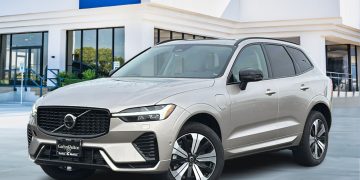
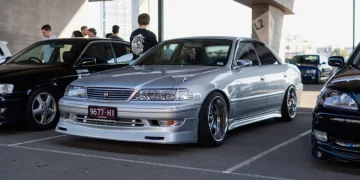

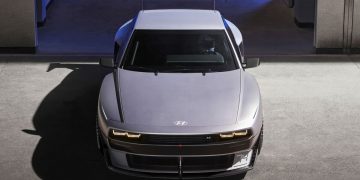
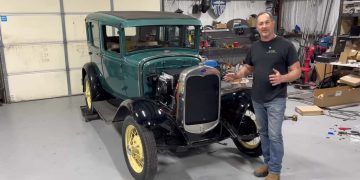

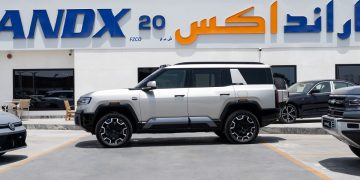

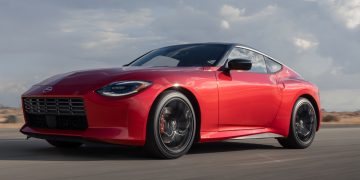
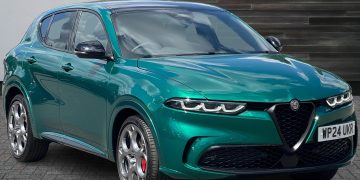





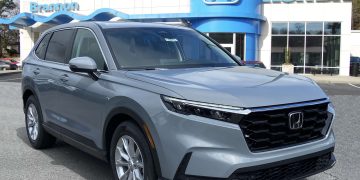















Discussion about this post